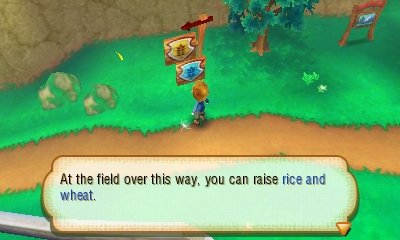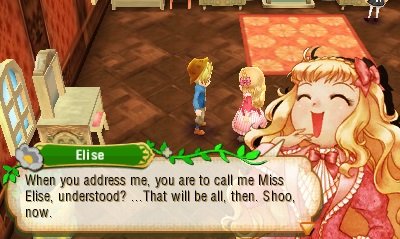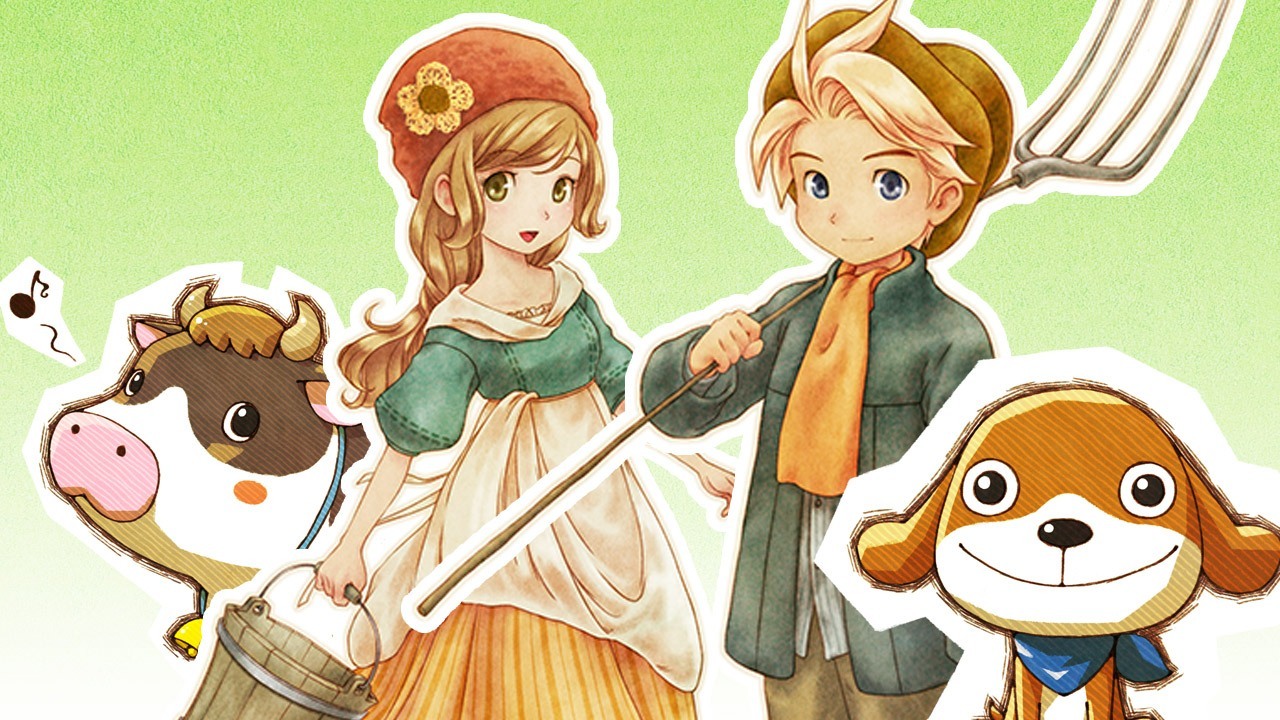Farmin' ain't easy: The cutthroat world of Story of Seasons
It’s easy to be charmed by Story of Seasons, aka, the Real New Harvest Moon. It has adorable animals like cows and kitties and alpacas, who express their appreciation for your ministrations with pink hearts that pop like sugary soap bubbles. It lets you sew yourself a nice green hoodie, or perhaps spend the afternoon fishing, or taking a lazy swim in the river. Visit your neighbor’s restaurant, catch fireflies, throw snowballs; how you spend your time is entirely up to you. It’s all just so inviting and relaxing.
It’s also a complete lie. Story of Seasons is war.

One of Story of Season’s most interesting aspects is that it expands your crop-growing capacity past the boundaries of your individual farm. While in previous Harvest Moons you had to make the best out of your limited acreage, now you can rent public fields that are particularly well suited to growing specific types of crops. There’s a field for grains, another for flowers, one for tea, an orchard, and so on. Leases last throughout the season, and once you’ve got one, you can simply extend it when it’s up for renewal.
Crops are a major source of revenue in the game and some of them are plant-it-and-forget-it levels of maintenance, providing you with a steady stream of income for very little effort. Even those that require daily tending are worth the effort, though, as they drastically bolster your coffers. But claiming these fields isn’t really about the money. The money is great, sure, because things like home improvements and farm animals get super expensive as the year marches on, but what drives the fury to own all the fields is the way your neighbors treat you when you don’t get one.
To obtain a public field, you have to challenge the previous lease holder to one of two competitions: either take part in a public festival (like a livestock show or cooking contest) or see who can ship the highest dollar amount of merchandise on a given day. When you fail - which you will do, early on, because you don’t have very good crops or much to sell in your first few seasons - townspeople treat you with a smug judgment that makes you want to set fire to the village. Oh…you came up…short. I had expected…more from you. Perhaps next time. You can practically hear them whispering about you behind your back.

It doesn’t help that the first few fields you’re likely to want are owned by Elise, the town’s resident rich bitch, who treats her staff like servants and everyone around her like peasants. Her response to your challenge is to throw her head back and laugh, “Oho, does someone need to learn their place?”
I hate Elise.
Weekly digests, tales from the communities you love, and more
Unlike other Harvest Moon games, which let you ship crops and products daily, you can only ship every few days in Story of Seasons, whenever merchants come to town. Under normal circumstances, I’d take advantage of a visiting vendor to sell off whatever I had on hand - crops, fish, stuff I’d whipped up in the kitchen, milk, whatever - and use that cash to fund my farm. But not after losing to Elise twice. The first time was the honey field. She beat me soundly and laughed in my face. The second time was the grain field. She laughed harder. (Ok, her reaction was literally exactly the same, because there isn’t all that much dialog in Story of Seasons, but I interpreted the mockery of her subtext.) I vowed never to lose to Elise again. Never again.
The local farmer’s guild lets you track all of the public fields and when they’ll be up for lease. By coordinating that information with the calendar on my farm, which let me know which vendors would be visiting on what days, I knew exactly how long I had to plan my revenge on Elise and take that honey field from her. It would be an entire month of waiting. Planning. Harvesting field after field of sweet potatoes, putting them in the fridge to avoid spoiling. Day after day of watering, fertilizing, collecting, planting. Weeks went by. I kept my eye on the prize. I even had a backup plan, just in case - I began making daily trips to the mine so that I would have the necessary materials to make jewelry, which sold at a high price. I eventually stockpiled so much stuff that I ran out of room in my fridge and storage boxes.
The day finally came and I carefully added up each transaction. Was it enough? How much would be sufficient to shove that golden-ringleted head of Elise’s into the dirt? Would $15,000 be enough? Not safe enough. Sell more. And more. $30k? No. Not safe enough. Sell more. I eventually decided that $53,000 would simply have to be enough. And, indeed, when the guild master gave us the results, I had wrested control of the honey field out of Elise’s perfumed, manicured hands. CRY, ELISE, CRY. I SHALL WATER YOUR CROPS WITH MY TEARS.

Thing is, none of this really happened. Oh, Elise did own the honey field and I did save up an entire season to make sure I won the content for ownership, but the bitter rivalry only existed in my head. Despite its title, there really isn’t much story to Story of Seasons; there are a few plot points, such as meeting the friendly Harvest Sprites, but there’s very little to ever guide you in any particular direction. Make clothes, grill fish, stay out all night hunting mushrooms - nobody’s going to stop you. There’s next to no narrative to be had, and so we as players fill in the blanks for ourselves. My imagined rivalry with arch villainess Elise made the routine of growing and selling crops more fun for me. My chores had purpose beyond simply earning me enough money to afford the next piece of furniture or cow. My autumn wasn’t merely spent working through the same game mechanics hour after hour; it was spent plotting revenge.
Games provide the blueprints for experiences, but it takes the player to really create the story. Even when given the most linear plot to follow, a player provides their own motivations, assumptions, and realizations, oftentimes without even realizing they’re doing it. We’re storytellers by nature, weaving tales from the most meager threads, using our personal world view to supplement the onscreen tools. We can create robust adventures to complement our gameplay, even when all we’ve got are a vaguely snooty farmer and three lines of dialog.
Elise graciously cleared out the field and I took possession, only to realize that I wouldn’t actually be able to harvest any honey until spring. It didn’t matter, though. I was content to let that field lay fallow for the entire season, its emptiness a daily reminder to Elise that what once was hers was now mine to do with as I pleased. She’s down to just one field, the leafy vegetables. I shall be generous and let her keep it.
For now.
Susan was once Managing Editor US at GamesRadar, but has since gone on to become a skilled freelance journalist, editor, producer, and content manager. She is now 1/3 of @Continuepod, 1/2 of @BeastiesLl, co-founder of @TakeThisOrg, and Apex Editor, Fluid Group.



